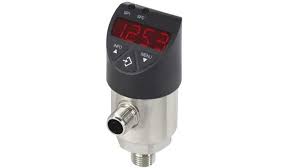Pressure Switches
&
Differential Pressure Switches
Pressure switches and differential pressure switches are devices used to monitor and control pressure levels in various systems. They are designed to detect changes in pressure and trigger an action when specific pressure thresholds are reached. Let’s explore the types of each:
1. Pressure Switches:
Pressure switches are used to sense absolute pressure in a system and actuate a response when the pressure reaches a predetermined set point. There are several types of pressure switches:
– Diaphragm Pressure Switch: This type uses a flexible diaphragm to detect pressure changes. When the pressure reaches the set point, the diaphragm deforms, triggering a switch to change its state.
– Piston Pressure Switch: These switches use a piston that moves based on the pressure changes. When the pressure reaches the set point, the piston triggers the switch.
– Bourdon Tube Pressure Switch: Similar to Bourdon tube pressure gauges, this switch utilizes a curved tube that reacts to pressure variations, causing a switch action at the set point.
2. Differential Pressure Switches:
Differential pressure switches are used to sense the difference in pressure between two points in a system. They are particularly useful for monitoring filter conditions, flow rates, and pressure drops. Some types of differential pressure switches include:
– Piston Differential Pressure Switch: Similar to the piston pressure switch, but designed to sense pressure differences rather than absolute pressure.
– Diaphragm Differential Pressure Switch: This type uses two diaphragms with different pressures on each side. The difference in pressure causes the diaphragms to move, triggering the switch.
– Bellows Differential Pressure Switch: Bellows-type switches can also be used for differential pressure applications. The bellows expand or contract with pressure changes, activating the switch at the set point.
Pressure switches and differential pressure switches find applications in various industries, including HVAC systems, oil and gas, process industries, automotive, and many others. Their ability to provide a reliable and automatic response to pressure changes makes them essential components in many control and monitoring systems.

